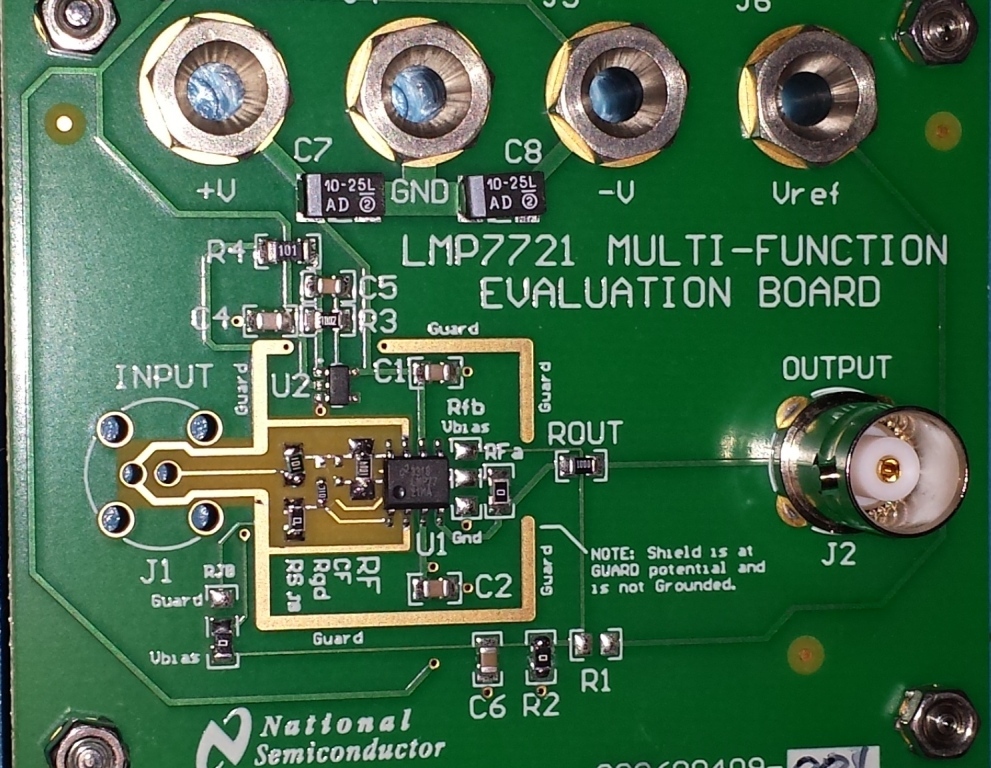I have two LMP7721 evaluation boards which I have modified to the Transimpedance configuration as shown in the figure 4 of the "LMP7721 Multi-Function Evaluation Board Users' Guide" [http://www.ti.com/lit/ug/snou004/snou004.pdf]. This is to be used with a photodiodes in photovoltaic mode.
The only difference is that I use either a 10 M or a 1M feedback resistors instead of 100M. I use +/- 2.5 volt power supplies and the positive input is grounded (Vbias = 0). My problem is that both boards have a fixed output of -1.36 volts regardless of input current or gain!
I have grounded the input without any change to the output. I also cleaned the board according to the video posted on the TI web page.
With 1 M Ohm feedback resistor when the input is grounded (i.e., VIN- ~ 0.000) VIN+ = 0.000 the output reads -1.359 and Vguard = -1.915 Volts.
I have also connected a photodiode with output current of 0.43 nA and tried both polarities. The output remains constant.
I have the modifications checked by another engineer to make sure that the TIA configuration is that of figure 4.
Am I missing something? Has anyone else encountered this problem?



